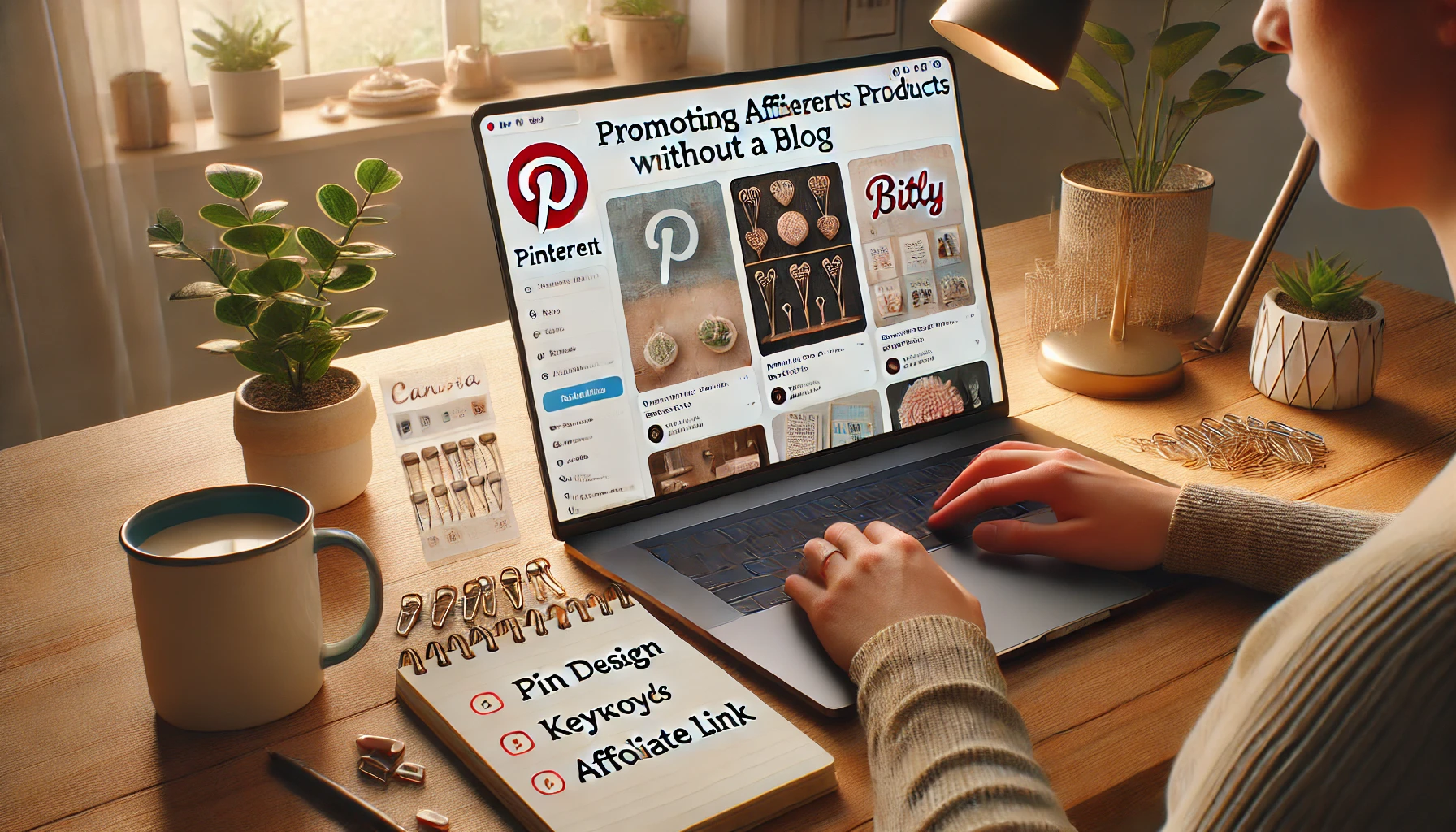Pinterest isn’t just a place for recipes and home decor — it’s a visual search engine with over 400 million active users searching for solutions, ideas, and products. And yes — you can absolutely use it to promote affiliate products without a blog.
In fact, Pinterest is one of the best platforms for affiliate marketing beginners because:
- It doesn’t require video or writing skills
- It drives evergreen traffic
- It works with both free and paid tools
- You can start promoting right away
In this article, you’ll learn exactly how to promote affiliate products on Pinterest, step by step — even if you don’t own a website.
Why Pinterest Works for Affiliate Marketing
Unlike Instagram or TikTok, where content disappears in hours, Pinterest pins can drive traffic for months or even years.
Why Pinterest is ideal:
- Users come to Pinterest ready to discover and buy
- Pins show up in search results and suggested feeds
- It’s easy to create affiliate-safe visuals
- You can direct users to affiliate-friendly landing pages or links
📌 Pinterest users are planners — they’re actively looking for inspiration, tools, and resources.
Step 1: Choose the Right Affiliate Product
You want to promote a product that:
- Solves a clear problem
- Has visual appeal or relevance
- Allows direct linking on Pinterest (check program rules)
Best niches for Pinterest:
- Home organization and decor
- DIY and crafts
- Personal development
- Health and wellness
- Freelancing, side hustles, and digital tools
- Budgeting and money tips
💡 Platforms like Systeme.io, Canva, and Etsy work very well on Pinterest.
Step 2: Set Up a Business Pinterest Account
It’s free and gives you access to:
- Analytics
- Rich pins
- Better content distribution
To set up:
- Go to business.pinterest.com
- Create a new business account or convert a personal one
- Optimize your profile with:
- A niche-relevant name (e.g., “Freelance Tools & Templates”)
- A keyword-rich bio
- Your profile photo or brand logo
🎯 Pinterest is search-based, so SEO starts with your profile.
Step 3: Create Boards with SEO in Mind
Think of your boards as categories. You want them to reflect the search terms people are using.
Examples:
- “Freelance Productivity Tools”
- “Work From Home Must-Haves”
- “Self-Care Essentials”
- “Best Budget Software for Creators”
Create 5–10 relevant boards and start pinning regularly.
Step 4: Create Click-Worthy Pins
This is the most important part — your pin graphic is what grabs attention.
Use Canva (Free) to design pins with:
- Bold, readable text
- Bright colors and clean fonts
- A mockup or visual related to the product
- A short benefit-driven phrase (e.g., “Free Template Inside” or “Save 10+ Hours a Week”)
Pin title example:
“The Best Free Tool I Use to Automate My Business”
💡 Use Pinterest’s search bar to see what others are searching and pinning.
Step 5: Add Your Affiliate Link (the Right Way)
Yes — you can link directly to affiliate products on Pinterest, but:
Read the program’s terms first:
- Amazon Associates does not allow direct linking on Pinterest
- ClickBank, Systeme.io, and many other platforms do
- If in doubt, send traffic to a bridge page or email signup with your link inside
When pinning:
- Upload your pin image
- Add your affiliate link in the destination URL field
- Write a keyword-rich title and description
- Choose the most relevant board
- Publish or schedule with Tailwind (optional)
🧠 Use UTM tags or a link shortener (like Bitly) to track clicks.
Step 6: Use Keywords in Your Pin Title and Description
Pinterest works like Google — the more keyword-relevant your content, the more likely it appears in searches.
Where to use keywords:
- In the pin title (e.g., “Top 5 Digital Tools for Solopreneurs”)
- In the description (mention benefits and who it’s for)
- In hashtags (use 2–5 relevant tags)
📌 Write like you’re helping someone who searched for a solution — not just pushing a product.
Step 7: Stay Consistent and Analyze Results
Pinterest success comes from volume and consistency.
To grow:
- Post at least 3–5 pins per day (use Tailwind to schedule)
- Try different designs for the same product
- Repin your content to multiple boards over time
- Watch what types of pins perform best
Track your:
- Clicks
- Saves
- Engagement
- Affiliate conversions
Then double down on what’s working.
Bonus: Use Bridge Pages or Email Opt-Ins
Even without a full blog, you can:
- Send traffic to a free Linktree or Beacons page
- Collect emails using Systeme.io or ConvertKit
- Build a simple bridge page introducing the product
🎁 Offer a freebie or bonus to increase opt-ins and conversions.
Final Thoughts: Pinterest = Passive Affiliate Potential
Pinterest is one of the best platforms to grow affiliate income — especially if you love visuals and want long-term results without relying on video or blogging.
Start by choosing the right product. Create valuable, click-worthy pins. Use keywords and consistency to grow your reach.
Whether you’re promoting tools, templates, or lifestyle products, Pinterest can help you build passive, scalable affiliate income — one pin at a time.









1 Comment
Your writing is a beautiful reminder that the simplest ideas can often carry the most profound truths.